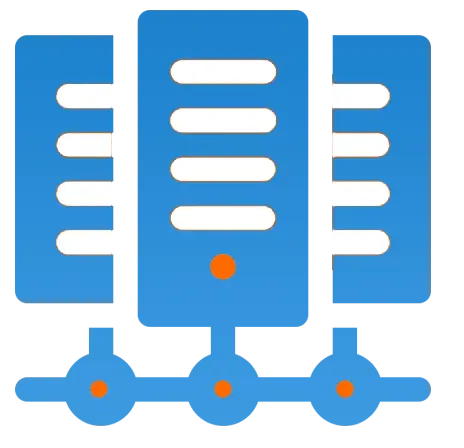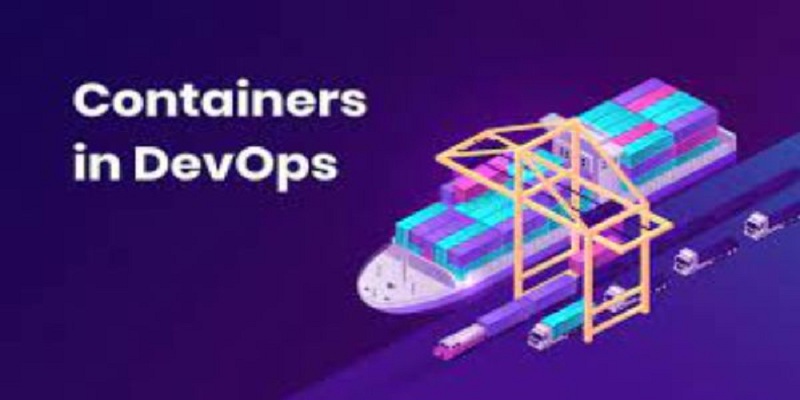Get 69% Off on Cloud Hosting : Claim Your Offer Now!
- Products
-
Compute
Compute
- Predefined TemplatesChoose from a library of predefined templates to deploy virtual machines!
- Custom TemplatesUse Cyfuture Cloud custom templates to create new VMs in a cloud computing environment
- Spot Machines/ Machines on Flex ModelAffordable compute instances suitable for batch jobs and fault-tolerant workloads.
- Shielded ComputingProtect enterprise workloads from threats like remote attacks, privilege escalation, and malicious insiders with Shielded Computing
- GPU CloudGet access to graphics processing units (GPUs) through a Cyfuture cloud infrastructure
- vAppsHost applications and services, or create a test or development environment with Cyfuture Cloud vApps, powered by VMware
- Serverless ComputingNo need to worry about provisioning or managing servers, switch to Serverless Computing with Cyfuture Cloud
- HPCHigh-Performance Computing
- BaremetalBare metal refers to a type of cloud computing service that provides access to dedicated physical servers, rather than virtualized servers.
-
Storage
Storage
- Standard StorageGet access to low-latency access to data and a high level of reliability with Cyfuture Cloud standard storage service
- Nearline StorageStore data at a lower cost without compromising on the level of availability with Nearline
- Coldline StorageStore infrequently used data at low cost with Cyfuture Cloud coldline storage
- Archival StorageStore data in a long-term, durable manner with Cyfuture Cloud archival storage service
-
Database
Database
- MS SQLStore and manage a wide range of applications with Cyfuture Cloud MS SQL
- MariaDBStore and manage data with the cloud with enhanced speed and reliability
- MongoDBNow, store and manage large amounts of data in the cloud with Cyfuture Cloud MongoDB
- Redis CacheStore and retrieve large amounts of data quickly with Cyfuture Cloud Redis Cache
-
Automation
Automation
-
Containers
Containers
- KubernetesNow deploy and manage your applications more efficiently and effectively with the Cyfuture Cloud Kubernetes service
- MicroservicesDesign a cloud application that is multilingual, easily scalable, easy to maintain and deploy, highly available, and minimizes failures using Cyfuture Cloud microservices
-
Operations
Operations
- Real-time Monitoring & Logging ServicesMonitor & track the performance of your applications with real-time monitoring & logging services offered by Cyfuture Cloud
- Infra-maintenance & OptimizationEnsure that your organization is functioning properly with Cyfuture Cloud
- Application Performance ServiceOptimize the performance of your applications over cloud with us
- Database Performance ServiceOptimize the performance of databases over the cloud with us
- Security Managed ServiceProtect your systems and data from security threats with us!
- Back-up As a ServiceStore and manage backups of data in the cloud with Cyfuture Cloud Backup as a Service
- Data Back-up & RestoreStore and manage backups of your data in the cloud with us
- Remote Back-upStore and manage backups in the cloud with remote backup service with Cyfuture Cloud
- Disaster RecoveryStore copies of your data and applications in the cloud and use them to recover in the event of a disaster with the disaster recovery service offered by us
-
Networking
Networking
- Load BalancerEnsure that applications deployed across cloud environments are available, secure, and responsive with an easy, modern approach to load balancing
- Virtual Data CenterNo need to build and maintain a physical data center. It’s time for the virtual data center
- Private LinkPrivate Link is a service offered by Cyfuture Cloud that enables businesses to securely connect their on-premises network to Cyfuture Cloud's network over a private network connection
- Private CircuitGain a high level of security and privacy with private circuits
- VPN GatewaySecurely connect your on-premises network to our network over the internet with VPN Gateway
- CDNGet high availability and performance by distributing the service spatially relative to end users with CDN
-
Media
-
Analytics
Analytics
-
Security
Security
-
Network Firewall
- DNATTranslate destination IP address when connecting from public IP address to a private IP address with DNAT
- SNATWith SNAT, allow traffic from a private network to go to the internet
- WAFProtect your applications from any malicious activity with Cyfuture Cloud WAF service
- DDoSSave your organization from DoSS attacks with Cyfuture Cloud
- IPS/ IDSMonitor and prevent your cloud-based network & infrastructure with IPS/ IDS service by Cyfuture Cloud
- Anti-Virus & Anti-MalwareProtect your cloud-based network & infrastructure with antivirus and antimalware services by Cyfuture Cloud
- Threat EmulationTest the effectiveness of cloud security system with Cyfuture Cloud threat emulation service
- SIEM & SOARMonitor and respond to security threats with SIEM & SOAR services offered by Cyfuture Cloud
- Multi-Factor AuthenticationNow provide an additional layer of security to prevent unauthorized users from accessing your cloud account, even when the password has been stolen!
- SSLSecure data transmission over web browsers with SSL service offered by Cyfuture Cloud
- Threat Detection/ Zero DayThreat detection and zero-day protection are security features that are offered by Cyfuture Cloud as a part of its security offerings
- Vulnerability AssesmentIdentify and analyze vulnerabilities and weaknesses with the Vulnerability Assessment service offered by Cyfuture Cloud
- Penetration TestingIdentify and analyze vulnerabilities and weaknesses with the Penetration Testing service offered by Cyfuture Cloud
- Cloud Key ManagementSecure storage, management, and use of cryptographic keys within a cloud environment with Cloud Key Management
- Cloud Security Posture Management serviceWith Cyfuture Cloud, you get continuous cloud security improvements and adaptations to reduce the chances of successful attacks
- Managed HSMProtect sensitive data and meet regulatory requirements for secure data storage and processing.
- Zero TrustEnsure complete security of network connections and devices over the cloud with Zero Trust Service
- IdentityManage and control access to their network resources and applications for your business with Identity service by Cyfuture Cloud
-
-
Compute
- Solutions
-
Solutions
Solutions
-
 Cloud
Hosting
Cloud
Hosting
-
 VPS
Hosting
VPS
Hosting
-
GPU Cloud
-
 Dedicated
Server
Dedicated
Server
-
 Server
Colocation
Server
Colocation
-
 Backup as a Service
Backup as a Service
-
 CDN
Network
CDN
Network
-
 Window
Cloud Hosting
Window
Cloud Hosting
-
 Linux
Cloud Hosting
Linux
Cloud Hosting
-
Managed Cloud Service
-
Storage as a Service
-
 VMware
Public Cloud
VMware
Public Cloud
-
 Multi-Cloud
Hosting
Multi-Cloud
Hosting
-
 Cloud
Server Hosting
Cloud
Server Hosting
-
 Bare
Metal Server
Bare
Metal Server
-
 Virtual
Machine
Virtual
Machine
-
 Magento
Hosting
Magento
Hosting
-
Remote Backup
-
 DevOps
DevOps
-
 Kubernetes
Kubernetes
-
 Cloud
Storage
Cloud
Storage
-
NVMe Hosting
-
 DR
as s Service
DR
as s Service
-
-
Solutions
- Marketplace
- Pricing
- Resources
- Resources
-
By Product
Use Cases
-
By Industry
- Company
-
Company
Company
-
Company
The role of containers in DevOps and CI/CD pipeline
Table of Contents
“Containers are pivotal in DevOps and CI/CD pipelines as they offer a consistent environment for developing, testing, and deploying applications. This uniformity enhances collaboration, speeds up software delivery, and simplifies scaling. Additionally, containers support the adoption of microservices and cloud architectures, making the CI/CD pipeline more efficient and flexible.”
DevOps aims to bridge the gap between development and operations teams by sharing software and dependencies. By using DevOps containers, conflicts among different environments can be eliminated, promoting effective collaboration and continuity.
To determine the best type of container for your organization, it’s important to explore the different types of containers used in DevOps. In the past, organizations used Operating system-centric solutions like monolithic system containers that are designed for virtual machines.
Today, many organizations use application containers that run on individual processes, aligning with immutable infrastructure and microservices-centric solutions.
Containers have become an essential part of the DevOps and CI/CD pipeline, providing a flexible and efficient way to package, distribute, and deploy software.
In this blog post, we will explore the role of containers in DevOps and CI/CD pipelines and how they have changed how organizations develop and deliver software.
What are Containers?
Containers are a lightweight and portable way to package software or application and their dependencies into a single unit. It can run in every environment as it has all the necessary elements. They are similar to virtual machines (VMs) but do not require a full operating system (OS) to run, making them more lightweight and efficient.
Containers virtualize the operating system and run anywhere, from a private data center to the public cloud or on a developer’s laptop. In Containers, everything is at Google runs whether it is from Gmail to YouTube or to Search.
Containers use a shared OS kernel and only include the necessary libraries and dependencies for the application to run. This makes them easy to distribute and deploy, as they can run on any system that supports the container runtime.
Containers have become increasingly popular in recent years, with the rise of containerization platforms such as Docker, Kubernetes, and OpenShift. These platforms provide tools and APIs to manage and orchestrate containers, making it easy to deploy, scale, and manage applications in a distributed environment.
Containerization allows development teams to move fast, efficiently deployment of software, and operate at an unprecedented scale. We’ve learned a lot about running containerized workloads and shared this knowledge with the community: from contributing groups to the Linux kernel.
The Role of Containers in DevOps

DevOps is a culture and set of practices; the purpose of that is to bring development and operations teams together. It is used to improve collaboration, communication, and software delivery speed. Containers play an important role in DevOps by providing a way to package, distribute, and deploy software consistently and predictably.
Containers effortlessly deploy and scale applications in a distributed environment. With container orchestration platforms like Kubernetes, it’s easy to deploy and scale applications across multiple nodes in a cluster. This enables organizations to take advantage of cloud services like Amazon Elastic Container Service (ECS), Google Kubernetes Engine (GKE), and Microsoft Azure Container Service (ACS) to deploy and scale their applications.
Benefits of containers in DevOps
- With containers, DevOps provide a consistent environment for development, testing, and production.
- Containers enable faster and more efficient deployment of applications.
- Containers can isolate application processes and dependencies from the host system.
- Containers can be used to deploy microservices, which can be developed and deployed independently.
- Containers can be easily integrated into continuous integration/continuous delivery (CI/CD) pipelines.
- Containers can reduce infrastructure costs by allowing more efficient use of resources.
- With containers, developers can package their application and its dependencies into a single unit, making it easy to distribute and deploy.
- Using containers, developers can ensure that their applications run the same way, regardless of the environment.
The Role of Containers in CI/CD pipeline
CI/CD (Continuous Integration and Continuous Delivery/Deployment) is a set of practices to automate the software delivery process from development to production. Containers play an important role in CI/CD by providing a way to package, distribute, and deploy software consistently and predictably.
Containers also make deploying and scaling applications in a distributed environment easy. With container orchestration platforms like Kubernetes, it’s easy to deploy and scale applications across multiple nodes in a cluster. This enables organizations to take advantage of cloud services like Amazon Elastic Container Service (ECS), Google Kubernetes Engine (GKE), and Microsoft Azure Container Service (ACS) to deploy and scale their applications.
Benefits of containers in CI/CD
- With containers, CI/CD enables organizations to test and deploy software in an automated and repeatable way.
- Using containers, developers can package their application and its dependencies into a single unit, making it easy to distribute and deploy.
- CI/CD eliminates manual testing and deployment, as the application can be tested and deployed in a consistent environment.
- Containers provide a consistent and isolated environment for software development and testing.
- They allow for easy deployment and scaling of applications.
- Containers can package applications and dependencies together, making them more portable and easier to manage.
- Containers can also be used in a pipeline’s continuous delivery (CD) phase to deploy applications to various environments.
- Containers can be used in a microservices architecture, where different parts of an application are packaged and deployed as individual containers.
- Containers can be easily managed and scaled using orchestration tools such as Kubernetes and Docker Swarm.
Conclusion
CI/CD containers are crucial in the DevOps and CI/CD process, offering a reliable and uniform method to package, distribute, and deploy software. This approach enhances collaboration and communication and accelerates software delivery. By simplifying the deployment and scaling of applications in distributed environments, CI/CD containers facilitate the adoption of microservices architecture and cloud services. Consequently, the container CI/CD pipeline enables organizations to seamlessly integrate these advantages into their workflow.
Recent Post

Stay Ahead of the Curve.
Join the Cloud Movement, today!
© Cyfuture, All rights reserved.
Send this to a friend

 Pricing
Calculator
Pricing
Calculator
 Power
Power
 Utilities
Utilities VMware
Private Cloud
VMware
Private Cloud VMware
on AWS
VMware
on AWS VMware
on Azure
VMware
on Azure Service
Level Agreement
Service
Level Agreement 


















